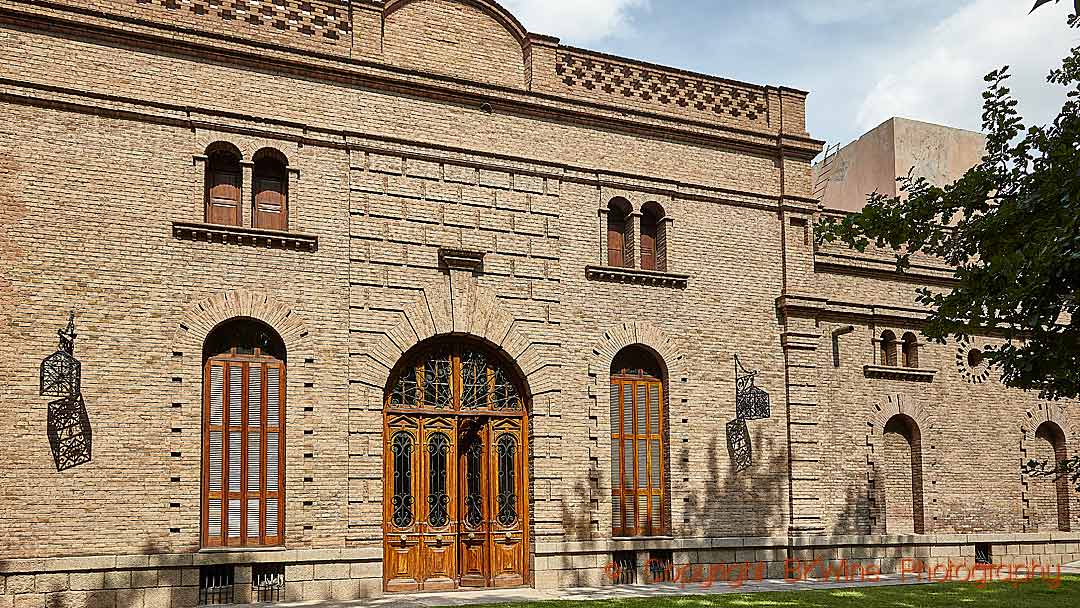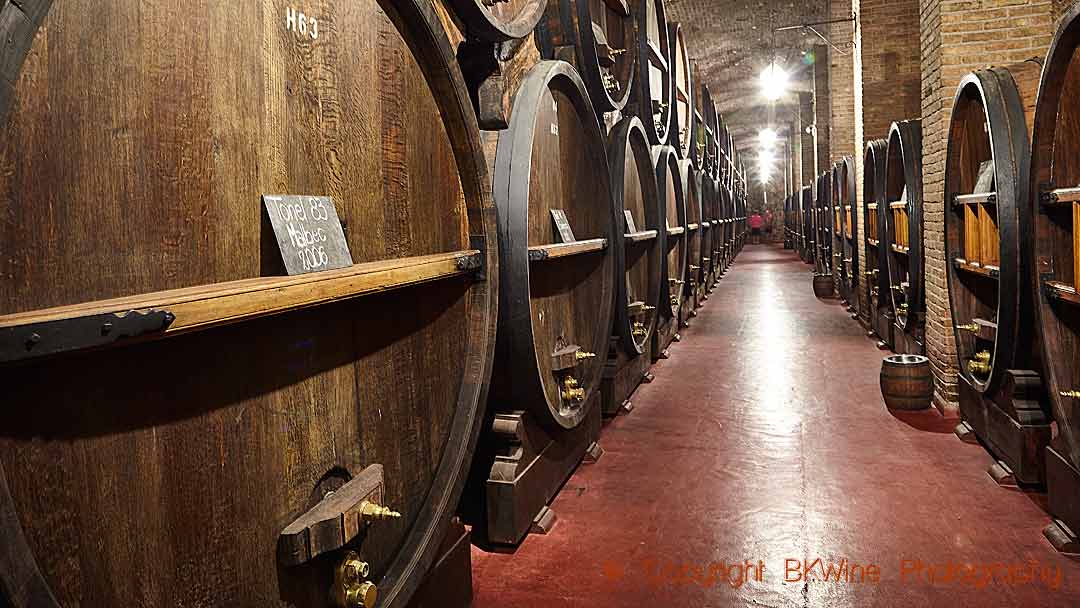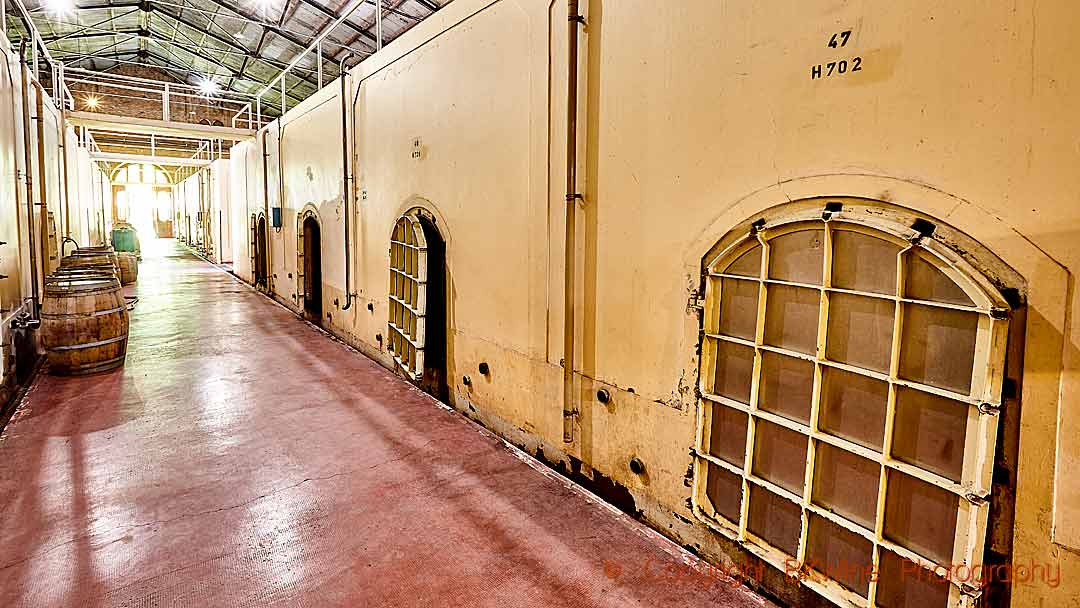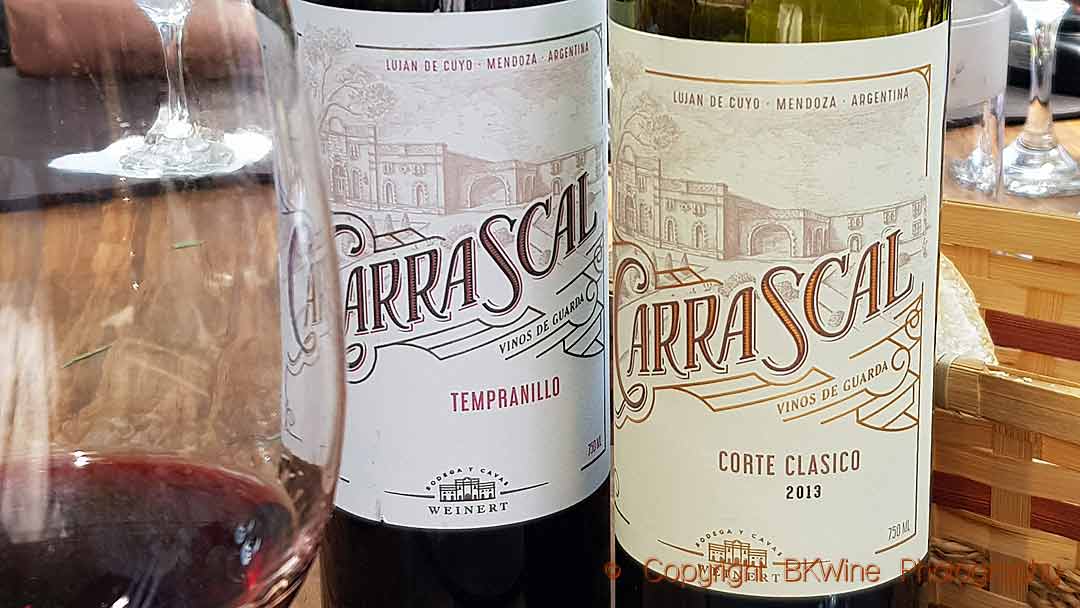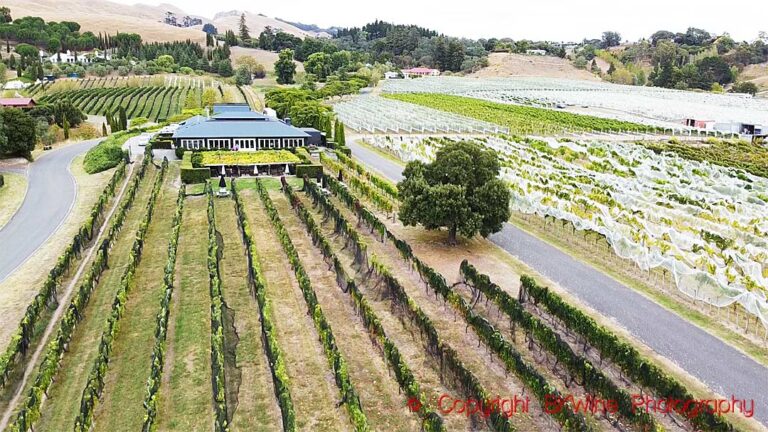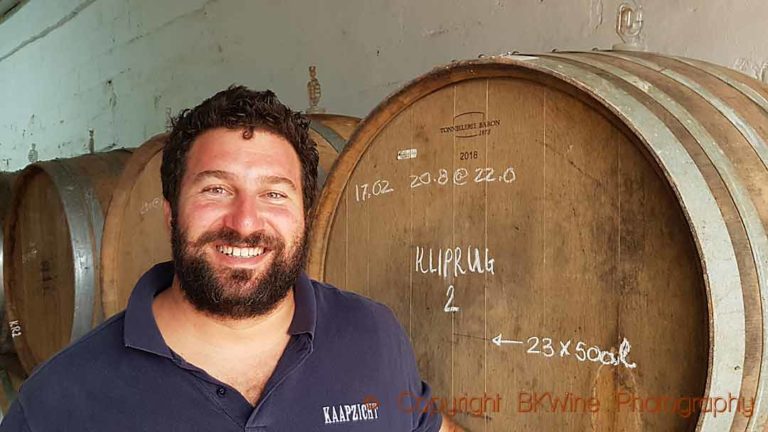Someone told me once that malbec is a friendly grape, easy to work with. Apparently, many Argentineans think so as it is by far the most planted grape in the country. It is best known for making easy-drinking charming wines but it can also make extraordinary long-lived wines. At Bodega Weinert in Lujan de Cuyo, winemaker Hubert Weber knows exactly what it takes to bring out the best character from this excellent grape. And his wine making principles are quite different in almost all aspects from most others.
Malbec came to Mendoza in 1850. Here it encountered very different climatic conditions from what it was used to in France, its home country. Its home region is the Cahors in the south-west of France. Mendoza is much drier with only 200-300 mm of rain per year. But malbec adapted and since 1990 is has seen a tremendous growth. Not only the Argentineans like malbec, the world likes it.
Mendoza in Argentina is a marvellous wine region, and not only for malbec. But there is no doubt about it, malbec is the superstar here. You could spend a long time drinking nothing but Mendoza malbec and still find new taste sensations.
This article was originally published in a shorter version on Forbes.com.
Malbec, more age-worthy than you think
Malbec can be powerful and intense, packed with dark fruit. But also, elegant. The styles differ depending on the producer and where the grapes are grown. There is today an enormous will to experiment, to try new ways of fermenting and ageing the wines, and new places to plant vineyards. All this in search of freshness and complexity.
Ten years ago, I visited Mendoza for the first time. At the famous Bodega Norton, I tasted a malbec 1974 together with their legendary winemaker Jorge Riccitelli. It was a beautiful wine. Jorge was very pleased with it as well. After 35 years it is still lively”, he said. “A good quality malbec ages gracefully.”
Maybe not everyone believes so, and there are many inexpensive malbec wines on the market, meant to be drunk as soon as they reach the bottle. But it is true. You don’t have to be in a hurry to drink your malbec. The fruit makes it immediately pleasant, but other aromas develop after a few years and the grape has the ability to retain a youthful freshness for quite some time.
This freshness is one of the things the producers are looking for when they go searching for high altitude vineyards in for instance Uco Valley, one-and-a-half-hour drive from Mendoza city. Here the vineyards are at 1100-1400 meters above sea level. Uco Valley became fashionable about ten years ago.
Lujan de Cuyo, the best terroir for malbec
However, not everybody feels the need to hurry down to Uco Valley in search of excellence. Hubert Weber is the winemaker at Bodega Weinert in Lujan de Cuyo. For him, there is no doubt about it: “Lujan de Cuyo have the best terroir for malbec”, he says.
Lujan de Cuyo is the heart of Mendoza. Here, many of the most famous Mendoza bodegas are situated. It is close to Mendoza city. You drive south and the vineyards starts before you are even out of the city.
When Hubert says this is the best terroir for malbec, he could have added, the best terroir for aged malbec wines, because that is his speciality.
I met Hubert and the owner of the winery Iduna Weinert at Bodega y Cavas Weinert earlier this year, in January, when travelling was still possible.
“My father bought this estate in 1974”, says Iduna. She shows us the pompous red brick building that is the winery, built in 1890 in an Italian-influenced colonial style. She calls it the “last urban winery”.
Iduna has been here since 2017. Hubert has been here for 24 years and knows Lujan de Cuyo inside out. He comes from Switzerland and he obviously likes it here.
Bodega Weinert doesn’t own any vineyards. Instead they work with many small grape growers. However, since the beginning of 2020 they are renting a plot of old malbec vines, planted in 1910. “We saved it from the urban planners who wanted the land for houses”, says Hubert.
Which grapes to choose?
Hubert knows with Swiss precision exactly what he is looking for when he buys grapes. His first requirement is that they have to come from Lujan de Cuyo. The maximum distance they transport the grapes is 24 km.
Secondly, the vines must be ungrafted. “There is nothing better than ungrafted vines”, he says, “they have more grape typicity”.
Finding ungrafted vines is not obvious as Mendoza is not totally free from the wine louse (phylloxera) so many growers prefer to graft on American rootstocks to be on the safe side.
Hubert’s third requirement is that he wants old vines, a minimum of 60 years old. This is, in his opinion, especially important for malbec. Some grapes he buys are from 100-year-old vines. “Old vines have deep roots and with malbec, the older the plot, the smaller the grape.” And the more concentration you get in the wine, he says.
His fourth requirement is that there should be no hail netting on malbec. Hail netting is very common in Mendoza as the region sometimes suffers very violent hail storms. Hubert says that the nets push the leaves together and this reduces the sunlight on the berries. They get less tannins and less polyphenols. “It is OK for young wines, but not for our style”. Also, with nets, he says that the grapes will be more sensitive of fungus.
Inside the winery
The impressive red brick winery houses a superb wine cellar. All the grapes are destemmed. He doesn’t want any greenness or bitterness from the stems. After a warm fermentation in concrete vats, at 28-30 degrees C (which Hubert says is old fashioned but he gets complex aromas from it), the red wine is moved to big oak casks for ageing.
“This is a big difference from ageing in small barrels”, says Hubert. In these big, beautiful oak vats the wines will age, sometimes for several years. The vats are mostly 50-60 years old. The oldest is 120 years old and it contains 44,000 hectolitres. In total they have 260 casks and in total they hold 1.3 million litres.
Hubert tastes the casks twice a year to decide when it is time to draw off the wine from the vat. The oldest wine right now in the vats is from 2004. But Bodega Weinert doesn’t release all wines as soon as they leave the casks. Some of them will be kept in the cellar and spend time in the bottle and the lucky wine lover without a wine cellar can buy ready-to-drink mature wines that are 10-15 years old and more.
The bodega releases 350,000 to 400,000 bottles on the market every year, some of them really old vintages. The malbec is used on its own or blended with cabernet sauvignon and merlot.
I remember Jorge Riccitelli’s words when Iduna and Hubert open a Bodega y Cavas de Weinert 1994, a malbec blended with cabernet sauvignon and merlot. It is unbelievably crisp for such an old wine with complex, ripe plum aromas but also more fresh fruit. A superb wine.
Listen to Hubert commenting on some of his wines on the video below.
This article was originally published in a shorter version on Forbes.com.
Travel
There are a lot of different types and styles of malbec wines. The best way to explore top-quality malbec is to come on a wine tour to Argentina and Chile with us at BKWine. And, for instance, enjoy an asado as the one below.
Travel to the world’s wine regions with the wine experts and the wine travel specialist.
Wine tours that last longer. BKWine wine tours.



